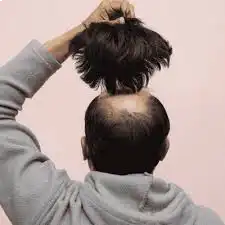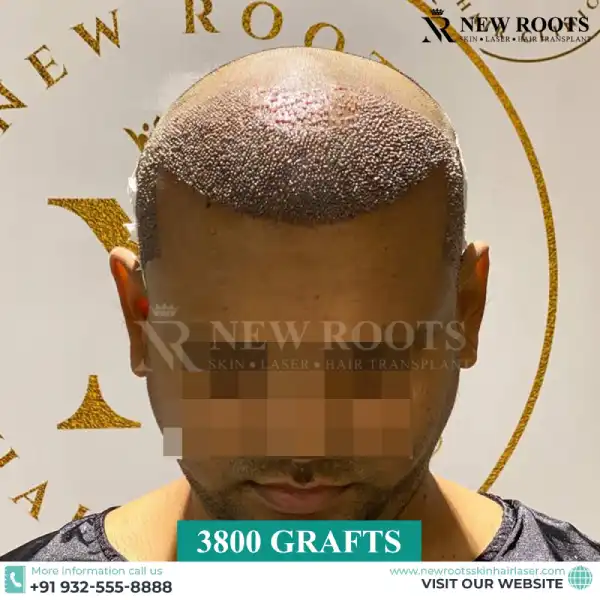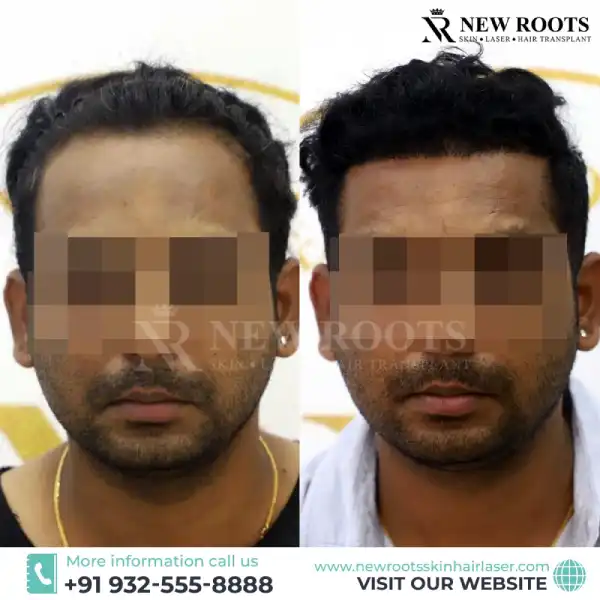If you have been grappling with hair loss and balding, and it’s a tough fight to boost hair growth, here are two easy options! Hair Weaving and Hair Transplant! And let’s find out which is better, Hair Weaving vs Hair Transplant.
Hair weaving is great for all ages and styles. It promises to augment the length and volume of the hair. With giant advances in technology and trailblazing techniques, hair transplants, too, help deal with hair loss successfully.
Both hair weaving and hair transplant promise you a head full of hair and the unstoppable confidence you have always longed for!
Table of Contents
Hair Weaving vs Hair Transplant: Which is Right for You?

Here’s a comprehensive guide to a detailed comparative study between hair weaving vs hair transplant, overseeing all the aspects of each procedure, thus helping you make an informed decision.
Importance of understanding various aspects of hair weaving vs hair transplant
You must understand everything about hair weaving vs hair transplant to make an informed decision based on which method will best fit you.
Knowing everything about both procedures will help you better choose the most suitable option, one that will align with your goals for hair restoration.
Comparing Hair Weaving vs Hair Transplant: Pros, Cons, Criteria and Considerations
- Success and Results –
A hair transplant surgery offers permanent hair restoration. Grafts are transplanted from the donor site to the recipient’s balding area, and it will take 9 to 12 months for you to have a head full of hair. Hair weaving, on the other hand, is an immediate but temporary remedy using natural or synthetic hair weaves and extensions.
- Safety and Risks –
Each procedure has its own set of risks. Understanding these differences allows individuals to decide which method best suits their health status and risk tolerance.
A hair transplant is associated with scarring, infection, bleeding, numbness of the scalp, shock hair loss, graft failure, dislodging of the grafts, and an unnatural-looking hairline.
On the other hand, hair weaving is fraught with – infection, allergic reactions, damage to the hair roots, hair loss, and maintenance issues.
- Cost –
Hair transplant surgery seems expensive initially but is actually cost-effective in the long run because of its permanent nature. Hair weaving, conversely, seems inexpensive, but bear in mind that it needs ongoing, constant maintenance, and those costs add up over time.
- Procedure and Recovery –
A hair transplant is a surgical procedure that involves local anesthesia and recovery time. Hair Weaving is non-surgical and involves fixing hair weaves and extensions. The recovery period is negligible, and you will see immediate results. These differences help plan for post-procedure care.
- Suitability for Different Types of Hair Loss –
Certain types of hair loss will benefit better from one method. Understand the nuances and select the perfect treatment for your hair goals.
Hair Transplant is perfect for people who have stable donor hair. It will successfully deal with male and female pattern hair loss. Hair Weaving is great for diffuse hair loss, instantly boosting hair volume.
Hair weaving is ideal for people with grade 7 baldness when a hair transplant can not be carried out because donor hair is unavailable. It is also recommended for people who can’t have a hair transplant surgery because of certain underlying medical conditions that make them ineligible for the procedure.
Long-Term Satisfaction –
A Hair Transplant offers permanent results because the hair follicles are transplanted from the permanent site and are resistant to DHT, which is largely responsible for hair loss in genetically susceptible individuals. Hair Weaving is a temporary fix, and the weaves will need periodic replacements to maintain the desired look.
Understanding the Differences and Similarities
The chief similarities between the two are their aim of hair restoration. Their goal is to restore hair and fight hair loss, thus augmenting hair density.
Both methods can also be customized to match your hair’s texture, color, and style, providing natural-looking results.
However, both hair restoration methods differ in the procedure, how invasive each is, and the results’ longevity, cost, and maintenance.
Your choice depends on your hair restoration goal, preferences, budget, hair loss pattern, and desired outcome.
Talk to a trichologist and understand which option would be a better fit for you.
Choosing Between Hair Weaving and Hair Transplant: What You Need to Know
When you wish to address hair loss successfully, you must weigh the merits and pitfalls associated with hair transplants versus hair weaving.
Each one offers definite advantages and disadvantages based on – the procedure, longevity, appearance, price, and maintenance. Understanding the differences and weighing out the pros and cons is vital in making your decision.
Discuss with an Expert
If you are unsure about hair weaving, how safe the procedure is, how a hair transplant will benefit you, whether it would be a good fit for you, or which one will work best, you need to discuss it with an expert. Debating with a trichologist will give you invaluable insights tailored to your needs.
A trichologist will evaluate your hair loss and help you decide the most effective treatment plan. He will explain the surgical process of the hair transplant, the recovery time, and the outcome.
He will outline the advantages and limitations of hair transplants and weaving and discuss everything with you. You will receive guidance on choosing the best method that aligns with your hair restoration goal, budget, and lifestyle.
FAQs
Hair weaving is not a permanent solution; you can’t manage hair loss permanently with hair weaving. Hair weaves need adjustments every 4 to 5 months, and you must visit the stylist frequently for maintenance. Furthermore, the glue used to fix the weave can affect the scalp, and you may have to discontinue the hair extensions.
Hair extensions are great for enhancing hair length and boosting volume and density.
A big bonus is that they come in various colors, so you can pick a color for the hair extensions that match your style and personality!
Hair weaves and extensions last about 4 to 5 months. After 5 months, you will need adjustments. Discuss this with a trichologist and a hair-weaving expert.
Hair weaving comprises fixing additional hair to your natural hair and scalp to give length and density and to cover up the bald. The extra hair is fixed using adhesives, glue, clips, tapes, and weaving techniques.
A hair transplant is a surgical procedure in which hair follicles are extracted from the donor section of the scalp and transplanted into the bald area. Your doctor may recommend either an FUT or an FUE.
Yes, a hair transplant is a long-lasting permanent procedure, given that the hair follicles are extracted from the permanent zone and are resistant to the hormone DHT, which is largely responsible for hair loss in genetically susceptible people.
The cost of hair extensions and weaving depends on the quality of your natural hair, the kind of hair extensions you choose, the fixing technique, and how experienced your stylist is. The length, quantity, quality, texture, and color of the extensions play a big part in determining the cost.
On average, hair weaving will cost you about 10000 to 25000. It is a fairly affordable hair restoration technique. You must also consider the products you use to take care of the hair extensions.
Remy’s hair is the superlative grade of human hair for hair weaves and extensions. It is super smooth, glossy, and gorgeous! Remy is the easiest to handle and work with, resilient and durable, and gives natural-looking results. Its hair cuticles are whole and unbroken, and they all face the same direction, making it glossy.
After your hair transplant, the transplant will fall off in about 2 to 3 weeks. This is normal; do not panic. New growth will start in about 3 to 4 months. Noteworthy results will be seen in 9 to 12 months.
You will be administered local anesthesia before the procedure to keep pain to a minimum during the surgery. You will experience some discomfort and soreness in the scalp once the anesthesia wears off. Pain medications will be prescribed to manage the pain and discomfort after the surgery.
Ensure that the hair extensions are installed professionally and that you care for them well. The hair follicles will not be affected, and you won’t see any hair shedding or loss.
On the other hand, hair extensions and weaves will damage your hair and scalp if installed incorrectly or if you do not care for them properly. If hair follicles are damaged, hair thinning and hair loss will occur.
Discuss with the expert and a trichologist, and ensure you adhere to the regular maintenance plan. Schedule regular appointments so your stylist can assess the condition of your hair weaves.
Hair weaving offers a wide range of possibilities for your hair. It is an excellent way to embellish and beautify your hairstyle, augment length, boost volume, and add some color! Conversely, if the weaves are not installed properly and fail to take good care of them as advised by the expert, your hair follicles and natural hair can get damaged, which could set off hair thinning and hair loss.
When installed correctly and cared for properly, weaves yield great results. Choose your expert wisely, get the weaves installed correctly, and ensure that you get professional after-care advice.
It is very important to take care of hair weaves and extensions. Treat hair weaves exactly like you would your natural hair—wash, condition using prescribed products, and style the hair regularly. This increases their longevity and prevents damage to them and the scalp.
Follow instructions for hair extension care to the T–
- Focus on scalp care. Before going for the fitting of the hair extensions, you must wash and deep condition your hair.
- Wash and condition your hair and the hair extensions in the same way.
- Hair extensions may need deep conditioning to tame the frizz better.
- Use sulfate-free shampoos, a nourishing conditioner, and a leave-in conditioner.
- Dry the hair as well as the hair extensions correctly.
- Keep tangles away, and comb the hair well every day.
- Do not use too many hair care products.
- Use a satin pillowcase – it keeps frizz at bay.
- Visit the expert regularly so that he can evaluate the status of the hair and the weave.
- When you decide to remove the hair extensions, get it done by the expert.
With hair weaving, you will see immediate results. It is an instantaneous solution to tackle hair loss; a hair transplant will take a while to show noteworthy results. Moreover, a hair transplant is done only once; you must do hair weaving every 4 to 5 months. Figure out which of the two is a better fit for you.
You can resume normal activities within seven days of the procedure. The transplanted hair will shed during the first few weeks, and new growth will start. You will see good hair growth within 9 to 12 months.
When conducted by an experienced surgeon, a hair transplant promises absolutely natural-looking results. The grafts are implanted to copy the natural hair growth pattern and angle; with time, the new hair blends in flawlessly with your existing hair.
Hair thinning is characterized by a gradual loss of hair volume and may be triggered by – a genetic predisposition, stress, hormone changes, stress, or an underlying medical condition.
Hair weaving can most definitely add hair to your existing natural hair giving it loads of volume and density. Hair is attached to your existing hair or the scalp and gives the illusion of full, thick hair.
Hair weaving is an option to temporarily boost hair density and cover up the bald where noticeable. Talk to a trichologist and a stylist to understand the best approach for you.
Furthermore, you must address the underlying cause of hair thinning and deal with that effectively for hair restoration.
A trichologist is an expert in Hair and Scalp health. He will diagnose and manage conditions related to the hair and scalp.
He will explain the causes of hair loss, hair loss patterns, the various treatments available, and hair restoration options. He will assess and evaluate your case and prescribe the best treatment plan.
The trichologist will give you detailed information about various options for managing hair thinning and loss.
Whatever you are contemplating – a surgical hair transplant, hair weaving, medications, applications, or minimally invasive treatments, he will discuss the pros and cons of each.
He will tell you what’s best for you and what you should expect. Discussing everything with the doctor ensures you obtain expert advice, customized care, and a complete management plan.
The specialized knowledge and guidance will definitely help you in your journey toward healthy hair.








